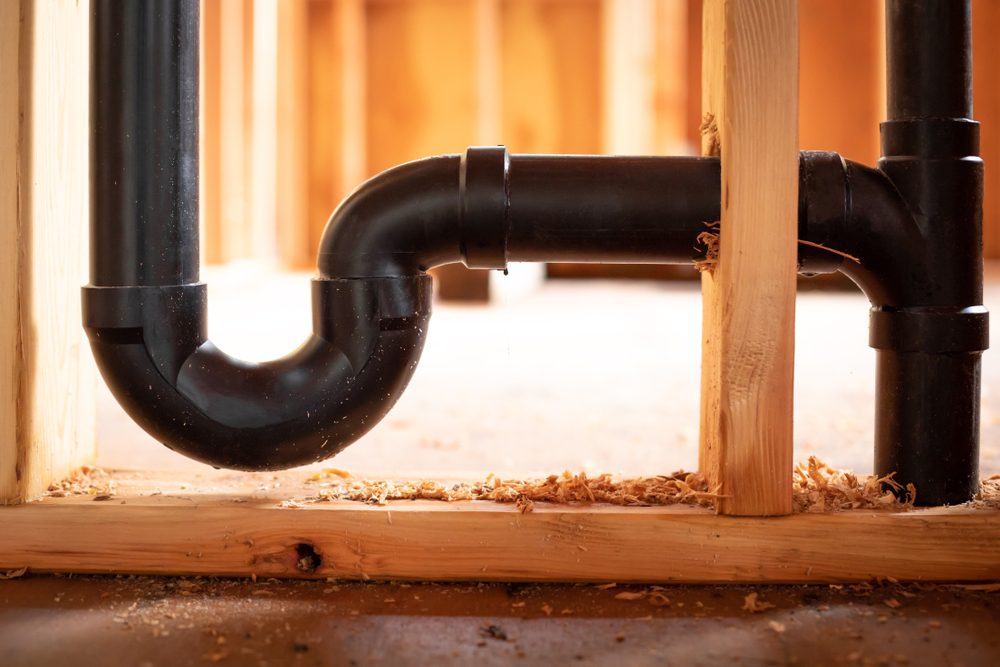The Benefits of Proper Ventilation in Your Plumbing System
The Benefits of Proper Ventilation in Your Plumbing System
Blog Article
On this page below you will find lots of extremely good answers when it comes to What Is A Plumbing Vent & How Do They Work?.

Appropriate air flow in plumbing systems is commonly overlooked, yet it is important for keeping the capability and security of your home's plumbing. Ventilation aids regulate atmospheric pressure, stop the accumulation of dangerous gases, and make sure the reliable elimination of waste. In this overview, we will discover the relevance of proper plumbing ventilation, how it works, and the benefits it brings to your plumbing system.
Recognizing Ventilation in Plumbing
Air flow in pipes refers to the network of pipes that enable air to stream through the drainage system. These vents offer several functions, including controling air pressure within the pipelines, preventing sewage system gases from going into the home, and assisting in the smooth flow of wastewater.
Just How Ventilation Works in Pipes Equipments
Air Pressure Guideline
Proper ventilation keeps balanced air pressure within the plumbing system. When water streams via pipes, it displaces air. Without adequate ventilation, this displacement can produce negative stress, leading to slow down drains pipes or siphoning of water from traps, which can create undesirable odors to permeate right into the home.
Preventing Sewer Gas Build-up
Among the most important functions of pipes vents is to avoid sewer gases, such as methane and hydrogen sulfide, from collecting within the home. These gases can position severe wellness threats and are highly flammable. Vent pipes enable these gases to escape securely outdoors.
Aiding in Waste Removal
Ventilation helps in the efficient elimination of wastewater by stopping airlocks in the drainage system. When air can move freely with the vents, it enables water and waste to stream efficiently through the pipes, reducing the risk of obstructions and backups.
Types of Plumbing Vents
Key Stack Vent
The main pile air vent, likewise known as the vent stack, is the key vent in a plumbing system. It prolongs from the main drainpipe line up with the roof, permitting gases to leave and fresh air to get in the system.
Branch Vent
Branch vents connect to the main pile air vent and serve private components, such as sinks, toilets, and showers. These vents make sure that each component has adequate ventilation to work effectively.
Air Admittance Valve (AAV).
An Air Admittance Valve (AAV) is a one-way valve that enables air to go into the pipes system without the demand for a traditional vent pipe extending through the roof. AAVs are typically used in restorations or areas where setting up a conventional vent is impractical.
Indications of Poor Air Flow in Plumbing.
Slow Draining Fixtures.
If your sinks, tubs, or bathrooms are draining gradually, maybe an indicator of poor ventilation. Insufficient air flow can develop a vacuum result, making it difficult for water to drain pipes correctly.
Gurgling Appears.
Gurgling sounds coming from drains pipes are often an outcome of air being drawn through water traps due to adverse stress in the pipes. This is a clear indicator of insufficient air flow.
Undesirable Smells.
Drain smells inside your home are a warning that your pipes system is not properly aerated. This could imply that sewer gases are not being sufficiently vented outside, causing potentially dangerous conditions.
Usual Air Flow Mistakes.
Insufficient Vent Sizing.
Utilizing undersized vent pipes can result in bad air flow and pressure imbalances in the system. It's necessary to use vents that meet the specific needs of your pipes system.
Improper Vent Placement.
Placing vents also far from the fixtures they offer can decrease their effectiveness. Correct placement ensures that air can move easily and successfully with the system.
Disregarding Code Demands.
Building codes give particular standards for plumbing ventilation. Ignoring these codes can lead to a system that falls short to work appropriately and may lead to pricey fixings or carcinogen.
Benefits of Correct Air Flow.
Enhanced System Performance.
Properly aerated plumbing systems run more successfully, with less blockages, faster draining pipes, and much less stress on the pipelines. This performance extends the lifespan of the plumbing system.
Improved Air Quality.
By avoiding sewer gases from entering your home, proper air flow adds to much better indoor air top quality, making your living setting healthier and a lot more comfortable.
Preventing Water Damages.
Appropriate ventilation aids stop water from being siphoned out of traps, which can bring about sewer gases entering the home and creating water damages in time.
Actions to Ensure Appropriate Air Flow.
Consulting Plumbing Codes.
Constantly get in touch with local pipes codes when designing or modifying your pipes system. These codes provide the essential guidelines for proper venting and ensure your system meets safety criteria.
Regular Examination and Maintenance.
Normal evaluations can aid determine potential air flow concerns before they come to be major issues. Upkeep tasks, such as cleaning up vent pipes and looking for clogs, are crucial for keeping the system in good working order.
Expert Setup.
For brand-new installments or major adjustments, it's important to employ a specialist plumber. They have the proficiency to make sure the ventilation system is correctly designed and set up according to code.
Conclusion.
Appropriate ventilation is an essential element of any plumbing system, making sure that it functions effectively and safely. By understanding the relevance of ventilation, acknowledging the signs of poor air flow, and taking steps to keep your system, you can avoid pricey issues and shield your home's air quality.
What is a Plumbing Vent and it's used for?All plumbing systems in residential and commercials construction have a plumbing vent. It doesn’t just vent unwanted odors from the drainage system to the outside; it actually serves an important purpose by supplying air to the system.
The plumbing drainage system is actually called a drainage, waste and vent (DWV) system. When water flows down the piping, an air supply (vent) is needed to allow the water to flow. Think of the vertical pipe as a drinking straw. If you plug the top end of a straw, liquid won’t drain from it.
The DWV system in your building consists of a series of pipes connected to each fixture; they extend above each fixture, and the system terminates at an open pipe that extends through the roof. This piping allows air into the system and prevents unbalanced pressures in the piping.
?The vent also prevents the system from drawing water out of a trap at the fixture with the characteristic “glug-glug-glug” as the drain gasps for air. Plumbing traps should drain smoothly and never “glug” or gasp for air.
If you have a drain that empties slowly or gurgles as it drains, this may indicate a venting problem. If you flush a toilet and the sink gurgles, there’s definitely a vent problem. It is good idea to have a Plumber check this.
https://www.ameliashomeinspection.com/blog/what-is-a-plumbing-vent-and-its-used-for

I hope you liked our article about What Is A Plumbing Vent & How Do They Work?. Many thanks for taking the time to read our short article. I beg you set aside a second to distribute this content if you enjoyed reading it. Thanks so much for going through it.
Free Estimate Report this page